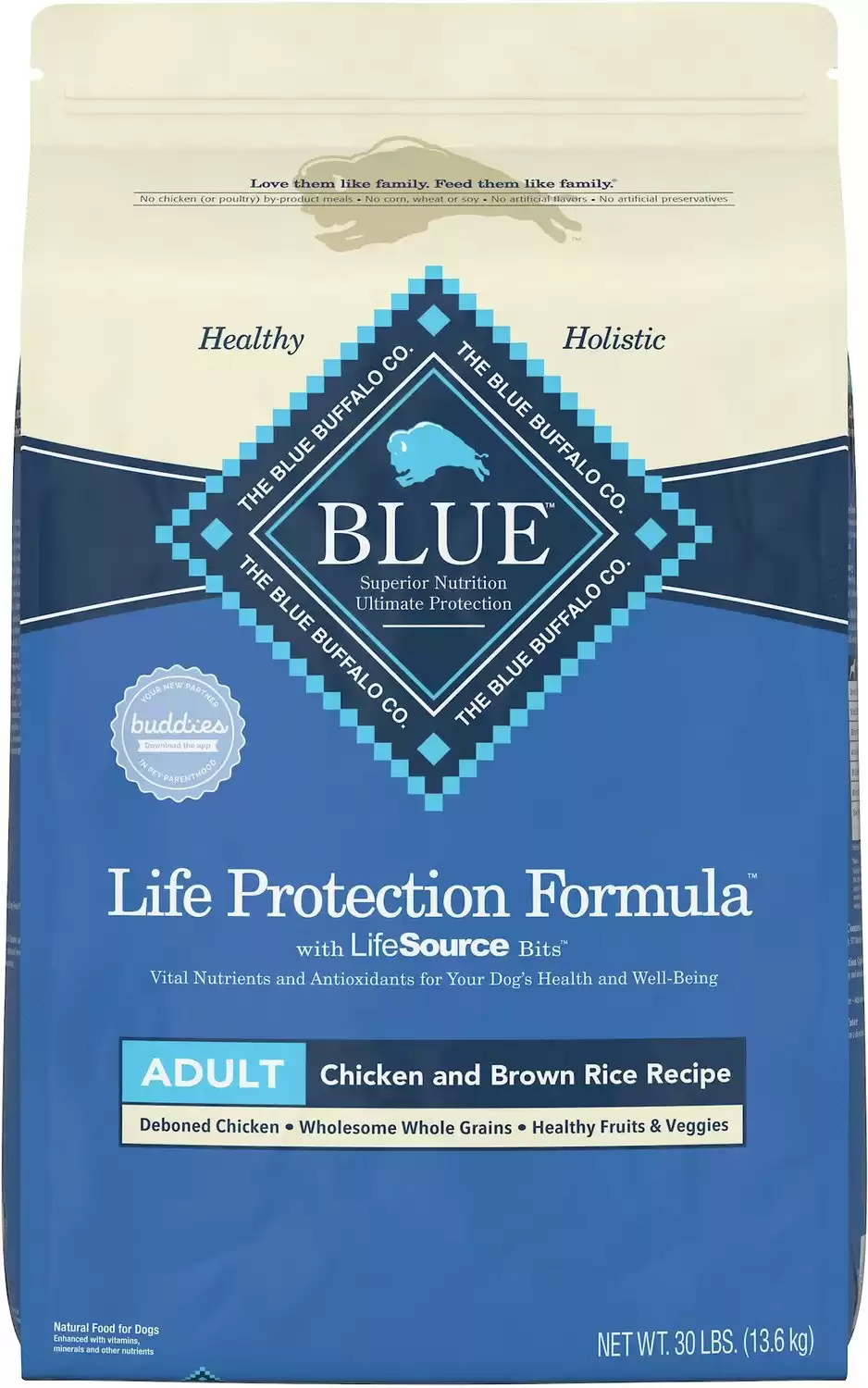Samoyed
Canis lupus
Advertisement
Samoyed Scientific Classification
- Kingdom
- Animalia
- Phylum
- Chordata
- Class
- Mammalia
- Order
- Carnivora
- Family
- Canidae
- Genus
- Canis
- Scientific Name
- Canis lupus
Read our Complete Guide to Classification of Animals.
Samoyed Conservation Status
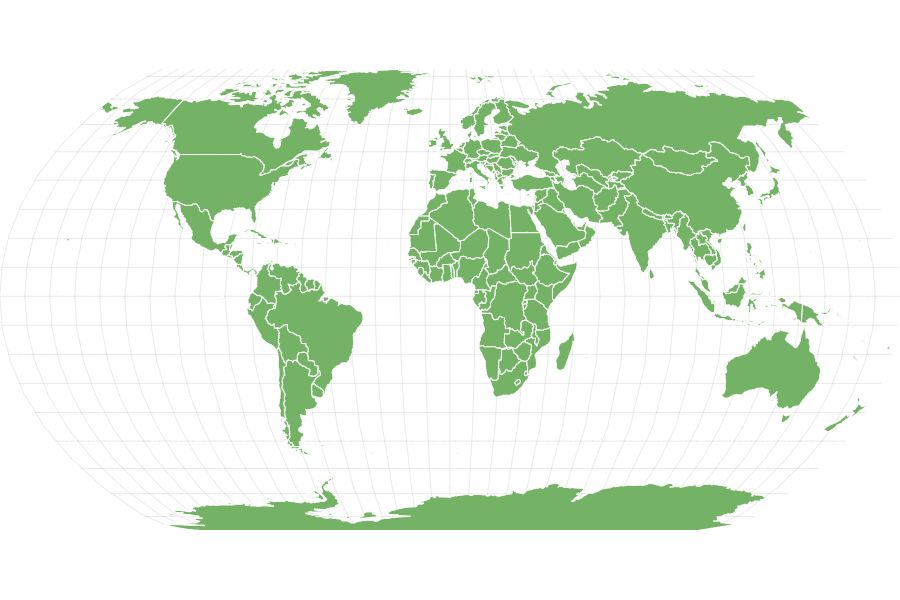
Samoyed Facts
- Common Name
- Samoyed
Samoyed as a Pet:
- General Health
- Energy Level
- Shedability
- Trainability
- Intelligence
- Tendency to Chew
- Size
- Family and kid friendliness
- Yappiness / Barking
- Silent
- Separation Anxiety
- Low
- Preferred Temperature
- Warm climate
- Exercise Needs
- Low
- Friendly With Other Dogs
- Poor
- Dog group
- Sporting
- Male weight
- - lbs
- Female weight
- - lbs
This post may contain affiliate links to our partners like Chewy, Amazon, and others. Purchasing through these helps us further the A-Z Animals mission to educate about the world's species.
View all of the Samoyed images!
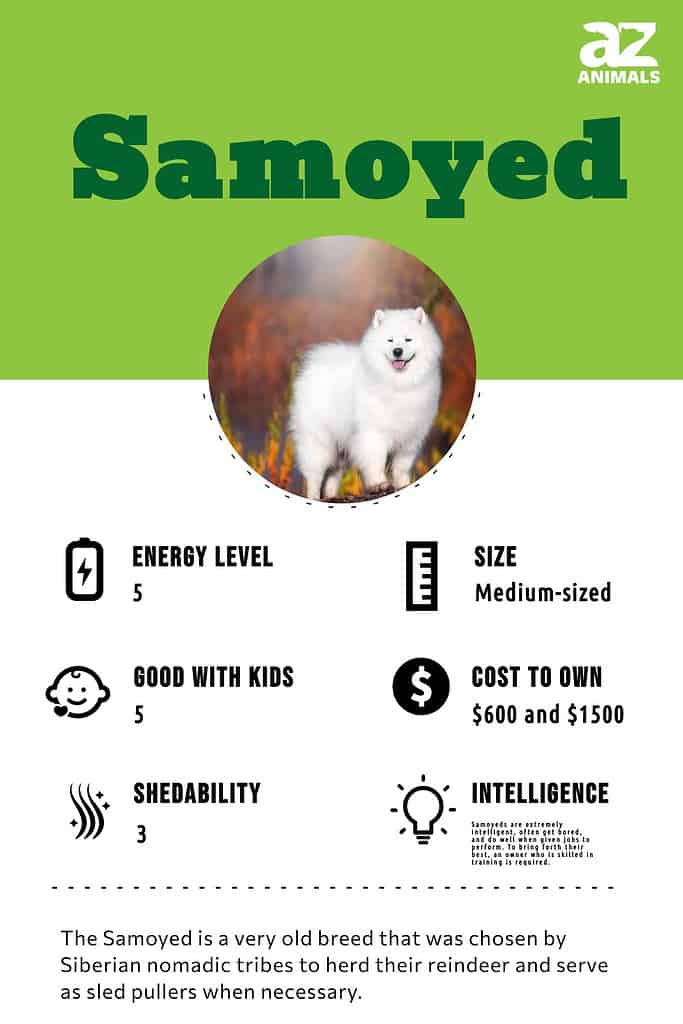
Samoyeds were bred in Serbia to herd reindeer, pull sleds, or hunt.
They are a basal breed and are part of the Spitz dog group. Samoyeds have very thick white fur that helped keep them warm in the frigid Siberian temperatures.
See all of our expert product reviews.
Their coat features two layers, a long and straight topcoat, and a dense undercoat. Samoyeds are hypoallergenic dogs. However, they do still shed quite a bit, especially during their shedding season.
The Samoyed is a gentle, friendly, and happy dog. They can be a bit stubborn, which can make it difficult to train this breed.
Owning a Samoyed: 3 Pros and Cons
| Pros! | Cons! |
|---|---|
| Playful: Samoyeds are very playful and make a great companion for a young child. | Shedding: Samoyeds shed a lot. Be prepared to brush your dog frequently a vacuum up hairs that have been shed. |
| Friendly: A Samoyed is a very friendly dog. They do well with children and can make a great family dogs. | Stubborn: This breed can be very stubborn, which can make training more of a challenge. |
| Good with other dogs: Samoyeds generally do well with other dogs. They would be a good addition to a home with other dogs. | Not Good for Warm Weather: Samoyeds have a very thick coat and are used to the cold temperatures in Siberia. They are not ideal dogs for hot climates where they could easily overheat. |
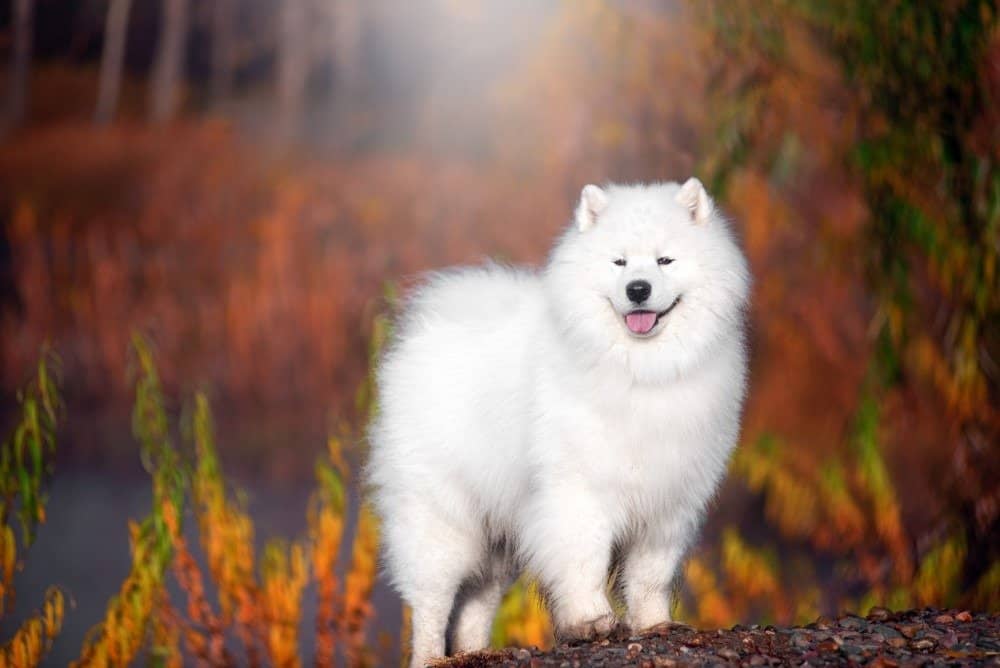
©Evgeniia Shikhaleeva/Shutterstock.com
Size and Weight

©Nikolai Tsvetkov/Shutterstock.com
The Samoyed is a medium-sized dog breed. Males are a little larger than females in this breed. Most males are between 21 and 23.5 inches tall and weigh between 45 and 65 pounds. Females are generally between 19 and 21 inches tall and weigh between 35 and 50 pounds.
Health and Entertainment for your Samoyed
See all of our expert product reviews.
When they are three months old, puppies weigh somewhere between 14 and 25 pounds. By six months, a puppy will likely weigh between 26 and 47 pounds. Samoyeds will be done growing by the time they are 16 months.
Learn more about the best big dog breeds here.
| Male | Female | |
|---|---|---|
| Height | 21 inches to 23.5 inches | 19 inches to 21 inches |
| Weight | 45 pounds to 65 pounds | 35 pounds to 50 pounds |
Evolution and Origins
Originating from around 1000 BCE, the Samoyed breed has remained remarkably consistent in both appearance and temperament.
The breed is called Samoyed in honor of the Samoyede people, who were a nomadic group that lived in the icy tundras of northern Russia and Siberia, situated close to the Arctic Circle.
The Samoyed breed was created from a type of dog called the Nenets Herding Laika. This spitz breed was frequently used for reindeer herding in northern Siberia. During that time, the Nenets people who used the dog were sometimes referred to as Samoyeds, which eventually led to the breed being named after them.
With a history dating back more than 5,000 years, Samoyeds are among the world’s oldest breeds. Wild reindeer replaced domestic reindeer as northern Eurasia’s primary food source after the last Ice Age.
Common Health Issues
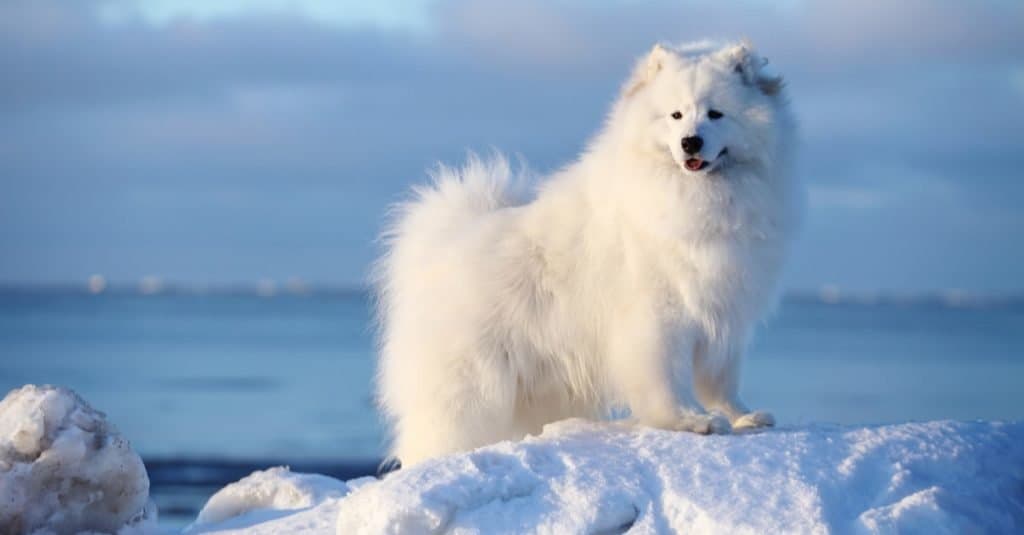
A white Samoyed on the winter beach in the snow in the northern Arctic. In the old days, Samoyeds were the working partners of the Samoyedic people of Siberia who survived by herding and breeding domestic reindeer.
©Ilya Barmin/Shutterstock.com
There are some common health concerns that affect Samoyeds. Knowing these facts can help you provide the best possible care for your dog.
Glaucoma is one health concern for some Samoyeds. Glaucoma occurs when there is increased pressure in one of the dog’s eyes. Sometimes, glaucoma may be hereditary, other times it can be caused by other eye problems that lead to less fluid in the eye.
Hip dysplasia is a common problem with many dogs, and Samoyeds are not exempt from it. This is a genetic condition where the dog’s thighbone doesn’t fit correctly into its hip joint. This causes the two bones to rub against one another. Over time, this will become painful for the dog and can cause them to limp.
Samoyed Hereditary Glomerulopathy is another hereditary condition. Males are more likely to develop more severe forms of this condition and may begin exhibiting symptoms around the time they are 3 months old. In severe cases, the dog will die by the time they are 15 months old. This is a hereditary condition, but a genetic screen test hasn’t been developed for it yet.
To sum up, here are three main health concerns that a Samoyed may face:
- Glaucoma
- Hip dysplasia
- Samoyed Hereditary Glomerulopathy
Temperament and Behavior
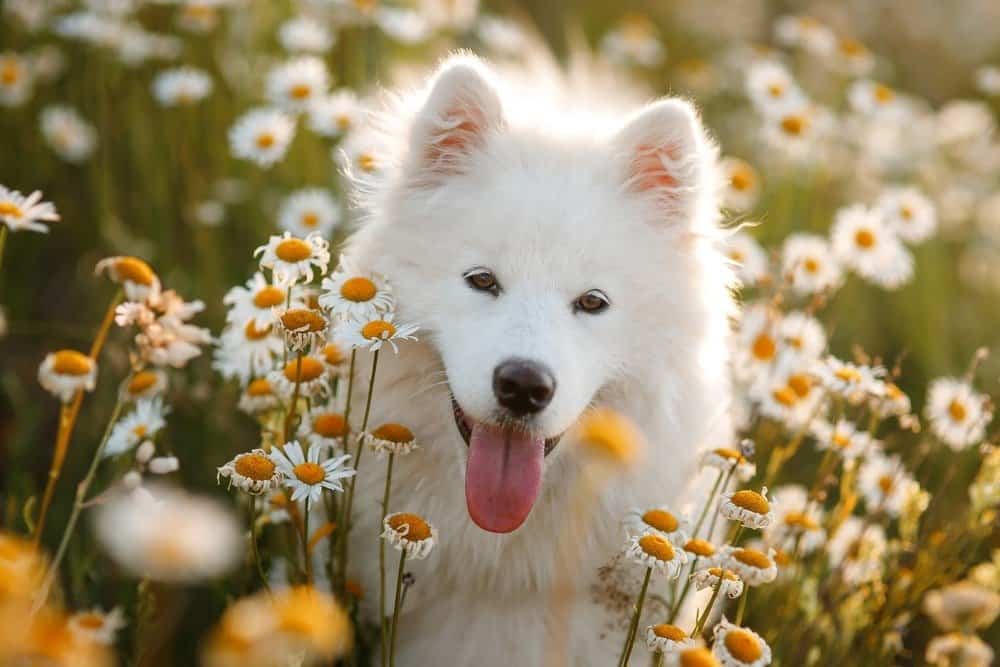
©Roman Milavin/Shutterstock.com
Samoyeds are known for their very friendly and happy personality. Some other traits that these dogs display include being gentle, alert, and adapting easily to different situations.
Samoyeds are also very playful dogs. They make great family dogs and can be the perfect playmate for a young child.
Samoyeds were bred to be hunting and herding dogs in Siberia, so this breed is used to being very active. They have a high energy level and a high need for exercise, and if these needs aren’t met a Samoyed may begin to exhibit destructive behaviors.
How to Take Care of This Breed
Taking care of a Samoyed will be unique from caring for other dog breeds. Learning important facts about this breed, such as their nutritional requirements, exercise needs, and common health concerns can help you create an appropriate care plan.
The Best Dog Food for Samoyeds
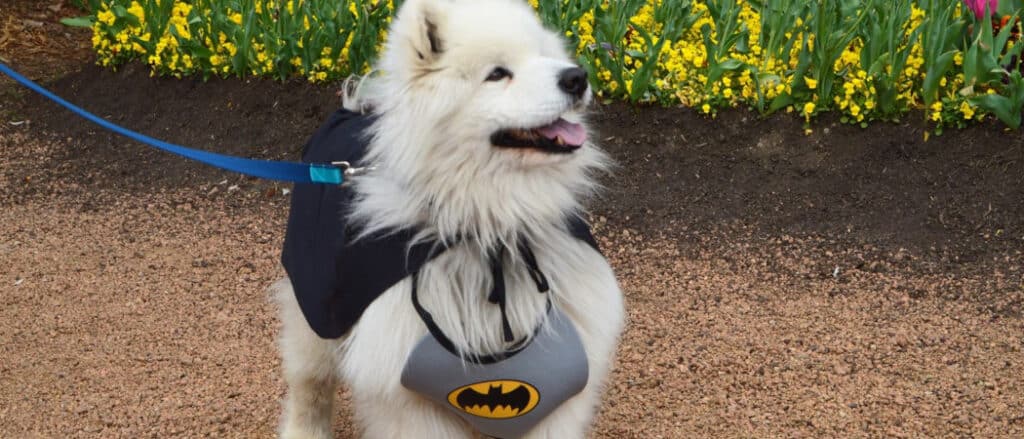
Choose a dog costume made from comfortable, breathable materials that are safe and durable.
©iStock.com/GJQuinlan
Samoyed puppies have small stomachs, which means they need to eat more frequent, smaller meals than adults do. Young puppies should eat three or four meals a day until they are about six months old. After the puppies are six months old, they can switch to eating two meals a day, which is the same amount of times adult Samoyeds should eat.
Samoyed puppy owners should be informed about glomerulopathy and its effects on the kidneys. Generally, kidney disease can be controlled and treated with a low-sodium diet, so look into low-sodium puppy foods.
Samoyed puppies and adults should both be fed a high-quality diet that meets their nutritional needs. Talk with your dog’s vets to learn different facts about what will help keep them healthiest, and look for a food that offers these characteristics.
An adult Samoyed may eat anywhere from 1.5 to 2.5 cups a day. The exact amount your dog will eat will vary based on their age, activity level, health concerns, and other factors. If you are unsure what the appropriate serving size is for your dog, you can check with your veterinarian.
For relatively healthy Samoyeds, A-Z Animals says the best dog food is Blue Buffalo Life Protection Formula Natural Adult Dry Dog Food.
Not only does this food fortify your Samoyed’s diet with amino acids for immune function, but it gives them taurine and vitamin A to prevent eye issues like glaucoma, and glucosamine to protect the joints from problems like debilitating hip dysplasia. This food had 24% crude protein to fuel Samoyeds’ endless energy and activity.
Blue Buffalo Life Protection Formula Natural Dog Food is available on Chewy or Amazon, where it ranks as the number one dry dog food.
- Essential, high-quality protein for healthy muscle development, and carbs for energy for an active life.
- Calcium, phosphorus and essential vitamins for strong bones and teeth.
- Glucosamine is added for joint health and mobility support.
- Vitamins, chelated minerals and antioxidants contribute to your pup's immune system health.
- No corn, wheat, soy or chicken (or poultry) by-product meals.
Maintenance and Grooming

The Samoyed was bred to herd reindeer and hunt prey.
©iStock.com/Abramova_Kseniya
Samoyeds are rather challenging to groom. During shedding season, it will be necessary to brush their hair every day to keep shedding at bay. While they shed a good amount, a Samoyed is a hypoallergenic dog, meaning they won’t irritate the allergies of anyone in the home.
Samoyeds will also need to be bathed about once every two months. Be prepared for this task to take a good amount of time. Thoroughly washing and drying their thick coats can be very time-consuming.
A Samoyed’s teeth should also be brushed a few times a week and their nails should be trimmed periodically to prevent them from getting too long.
Because of how challenging it is to groom a Samoyed, people often seek out a professional groomer to take care of this task for them.
Training
Samoyeds can be very stubborn, which can make training them a challenge. If you are trying to train your dog, being consistent and having lots of patience will be important. You may want to find a professional trainer to help ensure your dog learns the appropriate behaviors.
Exercise
Samoyeds are high-energy dogs. They were bred for hunting and herding, meaning they are used to being very active. For this reason, you will want to make sure your Samoyed gets plenty of exercise each day. Take them outside for walks or let them run around and play in a fenced-in backyard.
A Samoyed has a very thick coat that was used to protect him from Siberia’s cold temperatures. Avoid taking your Samoyed outside on a hot day. Keep them cool in the house with some fans and try to help keep them active by playing indoors.
Puppies
Samoyed puppies are adorable and will need special care from you to grow and develop into healthy adults. Before bringing your new puppy home, examine your house and make sure it is safe for a dog. Remove any hazardous chemicals or cleaners that the dog could get into and make sure there is nothing that you don’t want to be destroyed within their reach.
Once you bring your new puppy home, you should schedule a veterinary appointment to have him checked out and vaccinated. Starting training and socialization from an early age will also be important in making sure your dog knows how to act in different situations and when around people or other animals.
Samoyed was bred to be a working dog. They were used for herding reindeer. As an active breed, you will want to make sure that your puppy gets plenty of exercise and playtime.
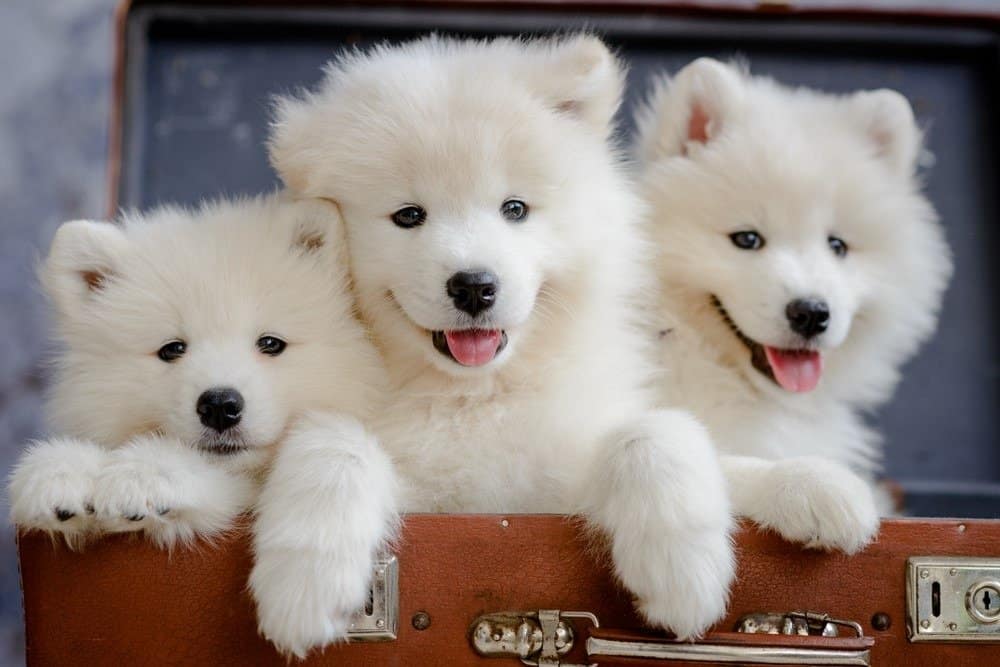
©Nadezhda V. Kulagina/Shutterstock.com
Samoyeds And Children
Samoyeds do very well with children. They are gentle, loving, and playful. If you have young children in the house, you should watch them closely around your Samoyed. A Samoyed is larger than a toddler, and could accidentally knock down a small child while playing around. Supervising older children around Samoyeds, and other dog breeds, is also a good habit to prevent any accidents.
Dogs similar to Samoyed
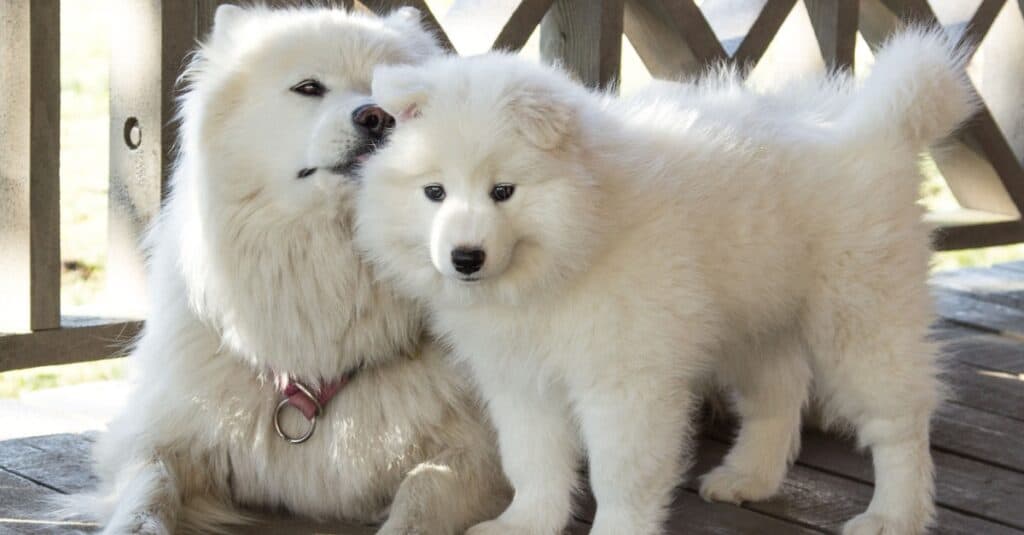
The Samoyed is known for its fluffy coat.
©iStock.com/Irina Tetereva
Siberian Huskies, American Eskimo Dogs, and Alaskan Malamutes are three breeds that share some similarities with the Samoyed.
- Siberian Husky: Siberian Huskies and Samoyed are both sled dogs that originated from Russia. Both dogs are very affectionate and can adapt well to different situations. Samoyeds have a white or cream coat, while Siberian Huskies have a wider array of colors including gray, red, black, and white.
- American Eskimo Dog: The American Eskimo Dog is white like the Samoyed. Both breeds are also heavy shedders and can make a good watchdog. The Samoyed is a larger breed than the American Eskimo Dog. The average weight of a male Samoyed is 55 pounds. There are three classes of American Eskimo Dogs (Toy, Miniature, and Standard). Their average weights range from 8 pounds to 26.5 pounds.
- Alaskan Malamute: The Alaskan Malamute is another sled dog. Both breeds are very social and enjoy playing. Neither breed likes being left alone and may develop separation anxiety. One key difference between an Alaskan Malamute and a Samoyed is their size. Alaskan Malamutes are larger and weigh between 80 and 95 pounds. Samoyeds typically weigh between 35 and 65 pounds.
Famous Samoyeds
Over the years, many celebrities have owned a Samoyed. Here are a few famous Samoyeds and their owners:
- Mush was Karen Carpenter’s Samoyed.
- Johnny was Helen Hunt’s Samoyed.
- Little Bastard was Denis Leary’s Samoyed.
Popular Names
If you’re looking for the perfect name for your Samoyed, check out our list below:
- Koda
- Snow
- Bear
- Luka
- Frost
- Nanook
- Yukon
- Ghost
- Blizzard
Samoyed FAQs (Frequently Asked Questions)
How much does Samoyed cost to own?
While a purebred Samoyed could cost over $3,000, most dogs in this breed will cost between $600 and $1,500 when purchased from a breeder. If you can find a Samoyed from a shelter or rescue organization, the amount you pay should be substantially cheaper; you’ll likely only pay a few hundred dollars to cover adoption fees and vaccinations.
Before buying a Samoyed, be sure to also allocate money for food, veterinary care, grooming, training, and all the supplies you’ll need for a new dog. In your first year of ownership, you could easily spend over $1,000. Each following year should be less expensive, but be sure to budget for at least $500 to $1,000 in expenses.
Do Samoyeds shed?
Yes, Samoyeds shed a lot. If you decide to bring this dog breed home, be prepared to have fur everywhere.
How big do Samoyeds get?
Samoyeds are a medium-sized dog breed. Males typically weigh between 45 and 65 pounds and are between 21 and 23.5 inches tall. Females generally weigh between 35 and 50 pounds and are between 19 and 21 inches tall.
How long do Samoyeds live?
The average life expectancy for a Samoyed is between 12 and 14 years.
Are Samoyeds good family dogs?
Yes, Samoyeds can make an excellent family dog. They make a great companion and enjoy spending time with the people they love. Samoyeds are loving, playful, and gentle, the perfect combination for children. However, be cautious having a Samoyed around smaller children since they could accidentally knock a small child over.
Are Samoyeds easy to train?
Samoyeds are not always easy to train. Even those this breed is intelligent they can also be very stubborn. You can train them yourself, but be prepared to put in a lot of time and effort and to have lots of patience. You may also want to look for an obedience class with a professional trainer.
Are Samoyeds herbivores, carnivores, or omnivores?
Samoyeds are Omnivores, meaning they eat both plants and other animals.
What Kingdom do Samoyeds belong to?
Samoyeds belong to the Kingdom Animalia.
What phylum do Samoyeds belong to?
Samoyeds belong to the phylum Chordata.
What class do Samoyeds belong to?
Samoyeds belong to the class Mammalia.
What family do Samoyeds belong to?
Samoyeds belong to the family Canidae.
What order do Samoyeds belong to?
Samoyeds belong to the order Carnivora.
What type of covering do Samoyeds have?
Samoyeds are covered in Hair.
What is the scientific name for the Samoyed?
The scientific name for the Samoyed is Canis lupus.
What's the difference between the samoyed and the keeshond?
The keeshond is smaller than the samoyed, and the samoyed comes in white colors, while the keeshond is usually dark. Additionally, these two dogs were bred for different purposes as well.
What are the key differences between the Samoyed and Chow Chow?
The key differences between the Samoyed and Chow Chow are appearance, lifespan, temperament, energy levels, trainability, barking levels, and health.
What are the key differences between the Japanese Spitz and Samoyed?
The key differences between the Japanese Spitz and Samoyed are appearance, lifespan, temperament, trainability, energy level, and barking level.
What are the key differences between the Samoyed and Siberian Husky?
The key differences between Samoyeds and Siberian Huskies include size, appearance, coat length, coat color, guarding behavior, trainability, energy level, grooming needs, shedding, and dog tolerance.
What is the difference between the Great Pyrenees and Samoyed?
The key differences between the Great Pyrenees and Samoyed are their size, appearance, coat colors, lifespan, trainability, grooming needs, drooling level, energy level, and noisiness.
Thank you for reading! Have some feedback for us? Contact the AZ Animals editorial team.
Sources
- American Kennel Club, Available here: https://www.akc.org/dog-breeds/samoyed/
- Wikipedia, Available here: https://en.wikipedia.org/wiki/Samoyed_(dog)
- Petfinder, Available here: https://www.petfinder.com/dog-breeds/samoyed/
- Middle the Samoyed, Available here: https://www.middlethesamoyed.com/are-samoyeds-hard-to-train-can-i-train-them-by-myself/
- K9 of Mine, Available here: https://www.k9ofmine.com/how-much-do-samoyeds-cost/#:~:text=Samoyeds%20aren't%20exactly%20cheap,dog%20breeds%20you%20can%20buy.




